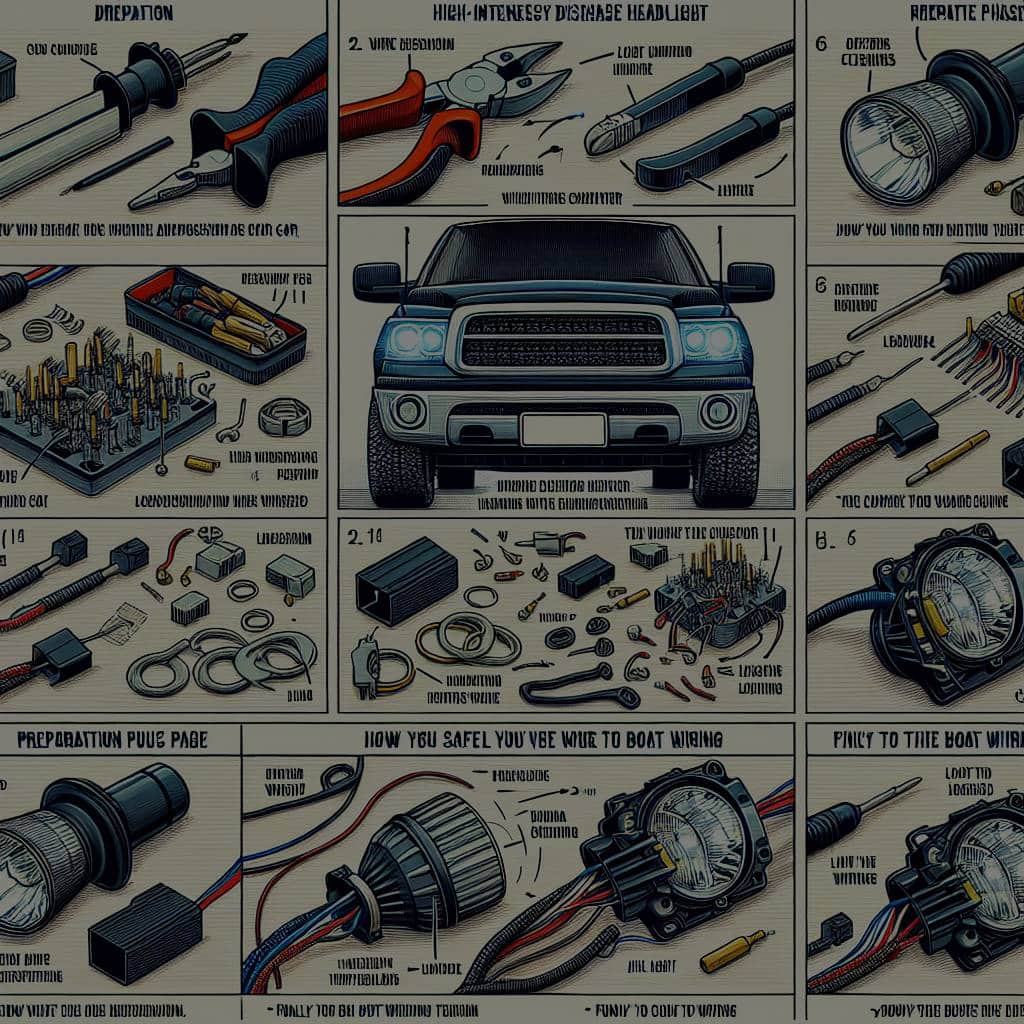How to Safely Wire High-Intensity Discharge (HID) Headlights on an Older Car?

When it comes to vehicle maintenance, headlights are often not given the attention they deserve. However, good lighting is crucial for safe driving, especially during the night or in adverse weather conditions. The headlights are your car’s eyes on the road, helping you navigate your path and alerting other road users to your presence. In recent years, High-Intensity Discharge (HID) headlights have become popular among car enthusiasts due to their superior performance and longevity compared to traditional halogen bulbs. But how can you safely wire these lights onto an older car? This article will guide you through the process, ensuring you’re well-equipped to handle this task.
Understanding HID Headlights
Before you start the process of wiring HID headlights onto your old car, it’s important to understand how these bulbs work. HID headlights, also known as Xenon lights, work by producing light through an electric arc between two electrodes, inside a tube filled with xenon gas. This process creates a bright, white light that is much more intense than that produced by halogen bulbs.
Also read : How to Install a Cat-Back Exhaust in a Mitsubishi Eclipse for Improved Sound and Power?
HID headlights offer a number of benefits. They provide a wider coverage area, allowing drivers to see more of the road ahead. They’re also more energy-efficient than halogen bulbs, drawing less power from your vehicle’s electrical system. This makes them an ideal upgrade for older cars with less efficient lighting systems.
However, HID headlights require a specific wiring setup to function correctly. This involves using a ballast to regulate the power supply to the bulbs and a projector to focus the beam of light onto the road.
In the same genre : What Are the Best Spark Plugs for Maximizing Fuel Efficiency in a Honda Civic Hybrid?
Preparing for the Installation
Before you begin the installation process, you need to prepare your workspace and gather the necessary tools and materials. You will need a set of HID bulbs that are compatible with your car’s headlight assembly, an HID ballast kit, a headlight projector kit (if not included in the ballast kit), and a basic set of hand tools. It is also advisable to have a service manual for your specific car model at hand.
To ensure a smooth installation, it’s important to disconnect the car’s battery before starting. This will prevent any accidental shorts and protect both you and the car’s electrical system from potential harm.
Wiring the HID Bulbs
After you’ve prepared your workspace, the next step is to wire the HID bulbs. Start by removing the old headlight bulbs from your car. Typically, this involves unscrewing the back of the headlight assembly and carefully pulling out the bulb.
Next, install the HID bulb in the same socket where the halogen bulb was. Ensure that the bulb is securely in place and that the base fits snugly into the socket. Once the bulb is fitted, connect it to the ballast. This device regulates the power supply to the bulb, ensuring it operates at the correct intensity.
For the wiring, connect the ballast’s input wires to your car’s original headlight connector. This will allow the HID bulbs to draw power from the car’s electrical system. Then, connect the ballast’s output wires to the HID bulb. Make sure to secure all connections with electrical tape to prevent any loose wires.
Installing the Projector
After the bulbs and ballast are wired, the next step is to install the projector. This device focuses the intense light produced by the HID bulbs into a controlled beam that illuminates the road ahead without blinding other drivers.
To install the projector, you’ll first need to remove the headlight assembly from your car. Once the assembly is removed, you can install the projector in the spot where the old bulb once sat. Each car’s headlight assembly is different, so you may need to modify yours slightly to accommodate the projector.
Once the projector is installed, you’ll need to align it properly. This ensures that the beam is pointed in the right direction and does not blind oncoming traffic. To do this, park your car facing a wall and adjust the projector until the beam is at the correct height and angle.
Adapting to the New Lighting System
Once the HID headlights are installed and tested, the final step is to adapt to your new lighting system. HID headlights produce a much brighter and whiter light than halogen bulbs, which can take some time to get used to.
Ensure you are aware of how to switch between the high and low beams, as HID bulbs require a few seconds to reach full intensity. Remember, the aim is to improve your visibility on the road without causing discomfort to other drivers.
By following this guide, you can safely wire high-intensity discharge (HID) headlights onto an older car. These powerful lights will give you a clearer view of the road, making your night time driving safer and more comfortable. Just remember to take your time, follow the instructions carefully, and always put safety first.
Final Adjustments and Safety Considerations
After successfully wiring your HID headlights and aligning your projector, there are some final adjustments and safety considerations to keep in mind.
First, remember that HID headlights are incredibly powerful, and therefore, they must be used responsibly. The law stipulates specific rules regarding their use to avoid causing discomfort or blinding other drivers. For instance, when approaching oncoming vehicles, you should switch from high beams to low beams. This rule applies to all headlights, but HID bulbs are particularly bright, so it’s crucial to switch them in good time.
Additionally, be aware that HID bulbs require a few seconds to reach full brightness, so plan ahead when you need to switch between high and low beams. It’s not instantaneous like it is with halogen bulbs or incandescent light.
Second, make sure to regularly check the alignment of your HID headlights. Over time, and especially after bumpy rides, the alignment might shift. Regular checks help to ensure that your headlights always provide the best possible visibility without blinding other road users.
Lastly, keep in mind that the bulbs, ballasts, and projectors in HID systems are more complex than those in traditional systems. Therefore, they might require more frequent checks and possibly replacements. Always replace HID components with compatible parts to maintain the safety and performance of your system.
Conclusion
Installing HID headlights on an older car is a detailed process that requires careful preparation, precise installation, and a commitment to safety. However, the benefits of these powerful lights are undeniable. They offer superior visibility and efficiency, making night-time driving safer and more enjoyable.
Remember, though, the onus is on you as the driver to use these powerful lights responsibly. Always mind other road users and switch to your low beam when necessary. Regularly check the alignment of your headlights and the condition of your bulbs, ballasts, and projectors.
In conclusion, if you crave the superior visibility offered by HID headlights, with careful installation and responsible use, they can be a fantastic upgrade to your older car. The process might seem intimidating at first, but with this guide, you should be able to take on the task with confidence. Ultimately, your safer and more enjoyable night-time drives will be well worth the effort.
